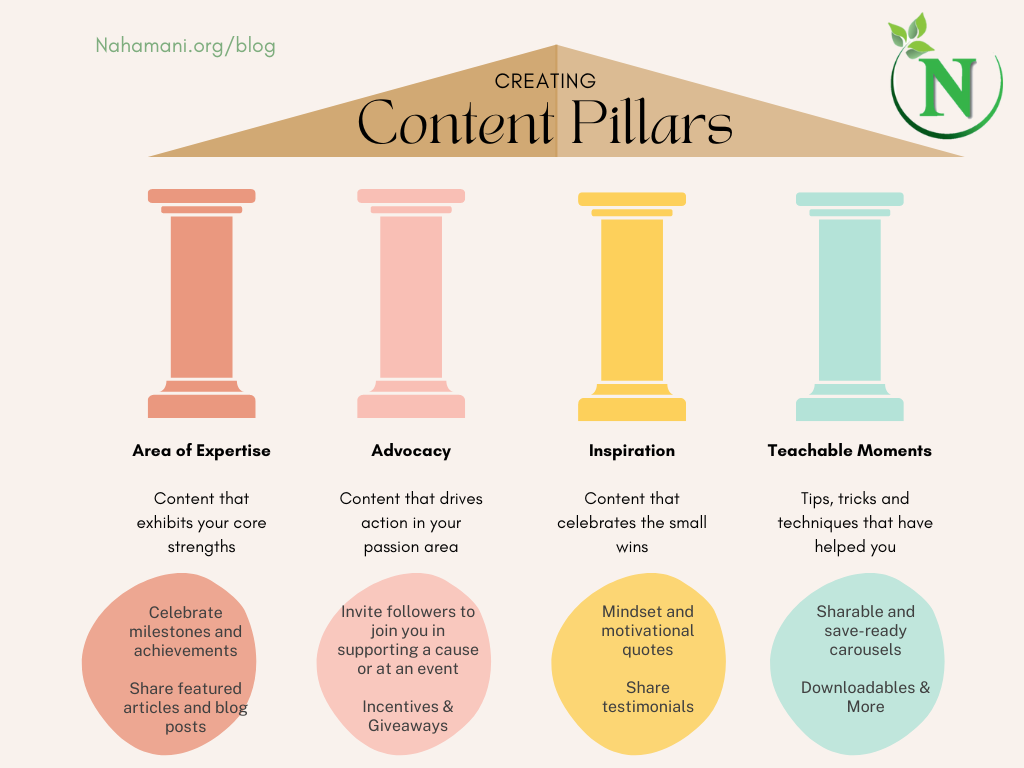They are guardrails for your business that allow you to consistently and efficiently create content without going off track. When developing your content pillars, it’s suggested to come up with three to five that speak to the mission and vision of your business. Ultimately, this will help your business to stand out.
Consumers have numerous options, whether deciding what skincare line or car to purchase, there’s a lot of noise to weed through. However, content pillars help communicate to consumers what you do, why you do it, and how. We break down how to identify and utilize content pillars as you’re scaling your business.
Thoughtful content pillars ensure what you publish or services you provide are relevant to your audience. Start by writing down 3-5 topics you want your brand to be associated with along the top of a page. Next brainstorm who your key stakeholders are for each column (type of customer, thought leaders, subject matter experts, and who you have a real-world relationship with). These steps will help to set a foundation for the content you invest your time and resources into creating.
Once you’ve identified your 3-5 content pillars, it’s time to start creating your content. Create a content calendar, make note of important dates (holidays, anniversaries, etc.) and think of ways your brand might fit into broader conversations that are taking place across social platforms. Consider slotting in macro content, this might include a blog post, product launches, and service updates. Additionally, map out micro-content, this might include daily Instagram, Twitter, and Facebook posts that are low-hanging and will take less time to execute.
Next, it’s time to get into the nitty-gritty of creating your content. While there are a number of software options available, we recommend using graphic design software like Canva to ensure your branding is consistent.

Most importantly, listen to your audience. They’ll ultimately help to guide the creation of content. Feedback is important, so don’t shy away from asking your audience directly about what they would like to see posted or the services they would like provided.
Try different platforms to build an audience and move on if it doesn’t work, it’s okay. Learning to pivot (quickly) is key when figuring out the best platform to use to get key messaging across to your audience. Using tools like Mailchimp, Google Analytics, and Salesforce can help measure the engagement of your content and allow for AB testing. Determine your desired result and then decide how long the testing period will go on.

Download my content pillar template: https://nahamani.org/wp-content/uploads/2022/06/My_Content_Pillars.pdf




